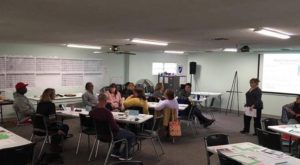
The Orange County Public School system includes about 13,500 half and full-time teachers. Since the current school year started on August 17, 2015 until May 9, 2016, those teachers have missed a total of 144,609 days from their regular classroom and other duties. A closer look at this total indicates that the largest share, 37.47% of that total, is actually due to illness. The other categories of days absent include personal days at 18.61% and “other” totals 15.29% of the absences. End of Course temporary duty assignments totals 0.25%. Temporary duty assignments took teachers away from their regular daily duties for a total of 28.38% of the days out.
Temporary duty assignments are usually approved by the district or school-based administrators to attend to planning matters, professional development, and other school and district needs. However, the very high absentee numbers raise important questions, including the use of discretionary temporary duty days and “other” assignments. Even in a district as large as Orange, high absentee numbers can have a tremendous impact on student achievement and can act as a canary in the coal mine to indicate much more serious organizational problems.
Michele Smallwood, a 15-year classroom veteran and certified school counselor, referred to the high absentee numbers as “a matter of mental health” that so many teachers need so many days off. “I think it’s important to have down time and have balance in life; working as a teacher requires time to turn off the switch,” she cautioned. She described the day-to-day work as a classroom teacher in OCPS as “largely rewarding, but it can be demanding and draining, both physically and mentally.”
“Taking days off to restore balance in teachers’ lives is important given our taxing work environment,” she concluded.
Absences that require a substitute are filled by Kelly Services, a personnel and temporary employee company contracted by OCPS. According to records reviewed by the West Orlando News, fill rates for OCPS vacancies in 2014-2015 ranged from 96.88% at OCPS Alternative Education schools to 99.12% at OCPS high schools, with an overall combined fill rate of 98.20%, which includes all schools. However, the 98.20% fill rate meant that 2,968 classrooms went without teachers last year. This means that front office staff and administrators were responsible for filling those vacancies at the building level. Administrators have been forced to assign paraprofessionals, non-classroom instructional staff, and other personnel to cover for absent teachers. The quality of instruction in those classrooms can be radically affected when regular classroom teachers are not present, whether those vacancies are filled by a substitute teacher or not.
A further review of records from 2014-2015, the last year for which complete records are available, shows a very high, 99.45%, fill rate by Kelly Services for Exceptional Student Education schools. However, this high fill rate might conceal the fact that, while only 11 days of absences were not filled by substitutes, 1,981 days were filled. This likely means that non-ESE certified personnel were in charge of ESE classrooms, constituting a potential problem for students and parents who want high-quality, trained, and certified special education personnel in charge of students’ education.
Whether in special education classrooms or in other schools, absenteeism seems to be a mushrooming matter of concern in OCPS, both for the organization itself and the public in general. What remains to be seen is whether, and to what degree, the OCPS School Board and district administration will take this information as a concern and act to improve students’ learning conditions and teachers working conditions to the point that less “mental health” days are needed.
Dr. Carl Howard is an Orlando teacher and union member.


